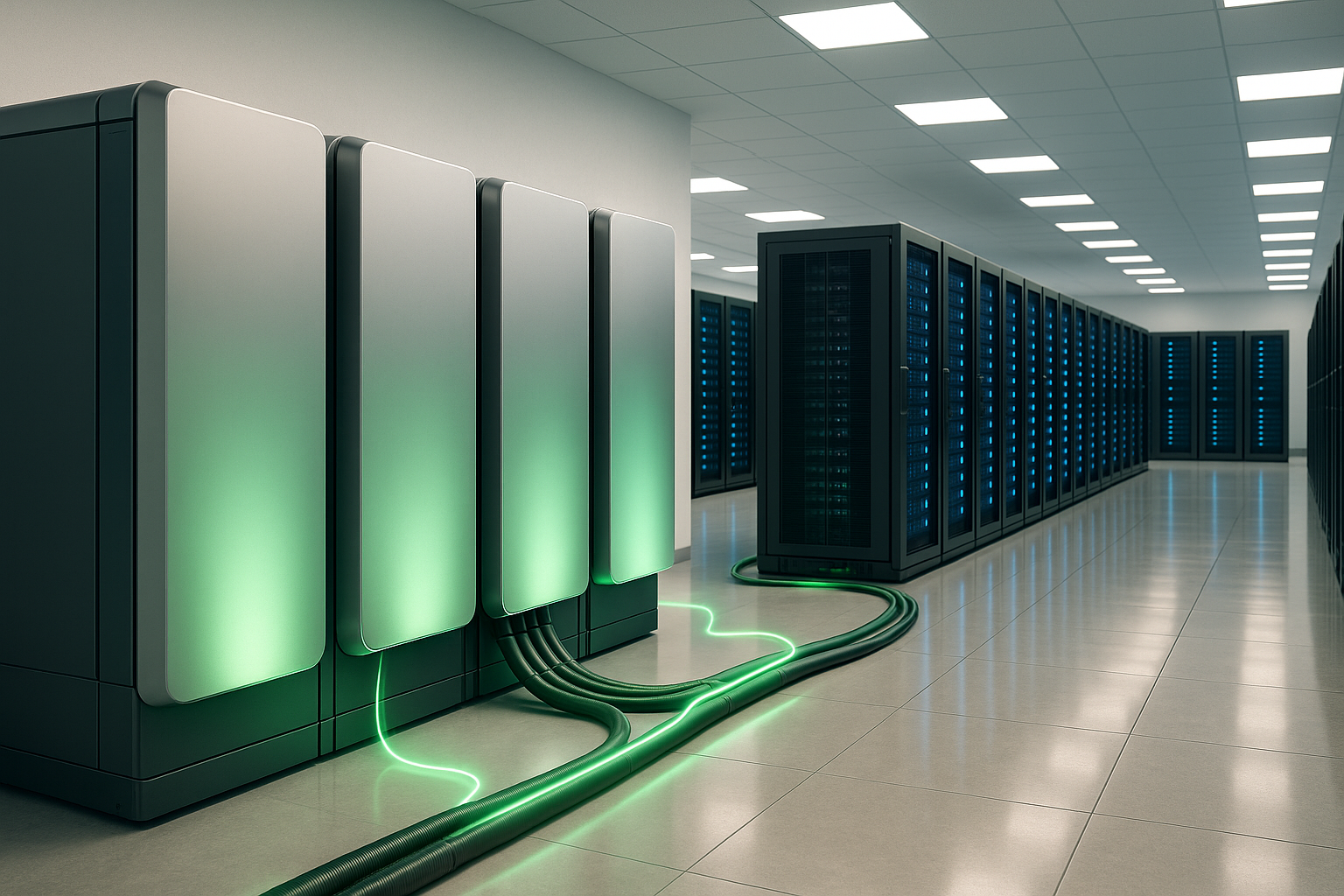Bloom Energy shares shot up a stunning 25% in premarket trading Monday. Why? Brookfield Asset Management is throwing up to $5 billion at Bloom's fuel cell technology to power AI data centers.
Nothing gets investors quite as hot and bothered as this particular cocktail—clean energy meets artificial intelligence with a heavy splash of billion-dollar commitment. It's catnip for the CNBC crowd.
Look, the market's enthusiasm isn't completely irrational here. In our current moment—where corporate sustainability pledges collide with insatiable computing demands—Bloom has somehow wedged itself into a remarkably fortunate position. Their solid oxide fuel cells offer data center operators something genuinely valuable: power that won't immediately torch their ESG ratings or trigger shareholder revolts.
What we're witnessing is what I like to call "convergence investing" (a term I've been using since covering the clean tech beat in 2018). It's what happens when multiple big-picture trends smash together and create what amounts to a capital black hole. Clean energy transition? Check. AI infrastructure boom? Double check. Add Brookfield's billions and... well, you get a stock chart that looks like a hockey stick.
I've watched the data center power conundrum brewing for years. These massive computing facilities are energy gluttons—especially when they're churning through AI workloads. A single large language model training run can consume as much electricity as a small neighborhood. Traditional grid connections are increasingly strained, both literally and... reputationally.
This Brookfield partnership? It tells us something. These folks aren't your typical frothy investors throwing darts at buzzword bingo cards (though heaven knows there's plenty of that happening elsewhere). They've been methodically assembling an AI infrastructure strategy. In Europe alone, they've committed north of €20 billion for AI projects in France. This is strategic positioning, not a casual flirtation.
What the market is really pricing into Bloom's shares is optionality.
If AI computing continues its exponential growth trajectory—and there's little reason to think it won't—traditional power infrastructure simply won't cut it. We're going to need alternatives. Preferably alternatives that can scale quickly, work reliably, and come with a green story to tell. Bloom's technology checks those boxes.
But (and there's always a but)... is a 25% one-day pop justified? Probably not entirely. The partnership has real potential, sure, but Monday's reaction has all the hallmarks of sentiment-driven enthusiasm. It's what happens when investors see "clean energy" and "AI" in the same press release and reach for their wallets before reading the fine print.
The broader trend here matters for anyone with skin in the technology game. As AI deployment accelerates, capital isn't just flowing to chipmakers and software companies. It's creating entire ecosystems of supporting infrastructure—from cooling systems to specialized real estate to, yes, power generation solutions. The AI gold rush has many winners beyond the obvious names.
For Bloom—which, let's be honest, has had a rocky road since its IPO—this partnership could represent a genuine inflection point. The big question will be execution: can they ramp manufacturing to meet new demand while keeping margins healthy? The market is betting yes. Then again, clean tech history is littered with technologies that couldn't bridge the gap from promising pilot to profitable deployment.
I'll be watching closely to see if alternative energy for data centers becomes a broader trend or remains niche. Whatever happens, Monday's price action reminds us that in today's market, combining clean tech and AI is like mixing tequila and Red Bull—guaranteed to get the party started, even if the hangover might be brutal.
